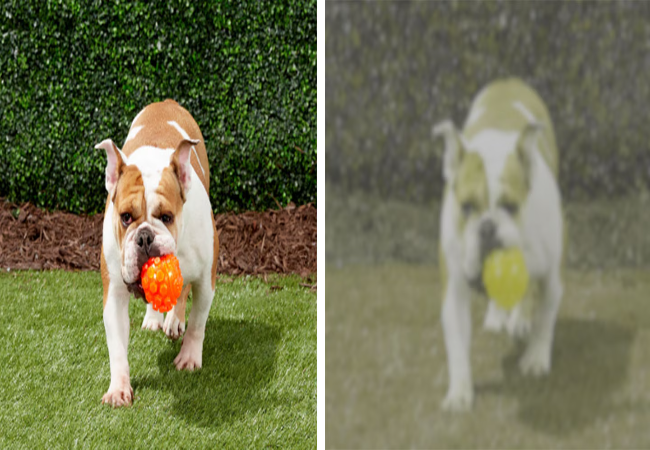Dog Color Vision 2025: Vet-Approved Guide to How Dogs See 🐶✨

In this article
Dog Color Vision 2025: Vet-Approved Guide to How Dogs See 🐶✨
By Dr. Duncan Houston BVSc
Dogs have dichromatic vision, meaning they perceive two primary colors: blue and yellow. This is quite different from humans, who have trichromatic vision and can see red, green, and blue.
🔹 How Dogs See Colors
Dogs’ color perception is limited because they have fewer cone cells in their retinas, which are responsible for detecting color. As a result:
-
They can see shades of blue and yellow clearly.
-
They can also distinguish different shades of gray.
-
They struggle to differentiate red and green, which may appear as shades of gray or brown to them.
🔹 Practical Implications
Understanding your dog’s vision can be helpful in everyday life:
-
Toys and training tools: Choose toys in blue or yellow to make them more visible and engaging for your dog.
-
Outdoor activities: Avoid relying on red or green cues in games or obstacle courses, as these may be hard for your dog to see.
🔹 Why It Matters
Dogs’ vision is adapted for movement detection rather than color recognition. They rely heavily on:
-
Smell and hearing for navigating the world.
-
Detecting motion, especially in low-light conditions, is aided by their high number of rod cells and reflective tapetum lucidum.
By understanding your dog’s unique visual abilities, you can better tailor their environment, toys, and training to suit their perception of the world.



